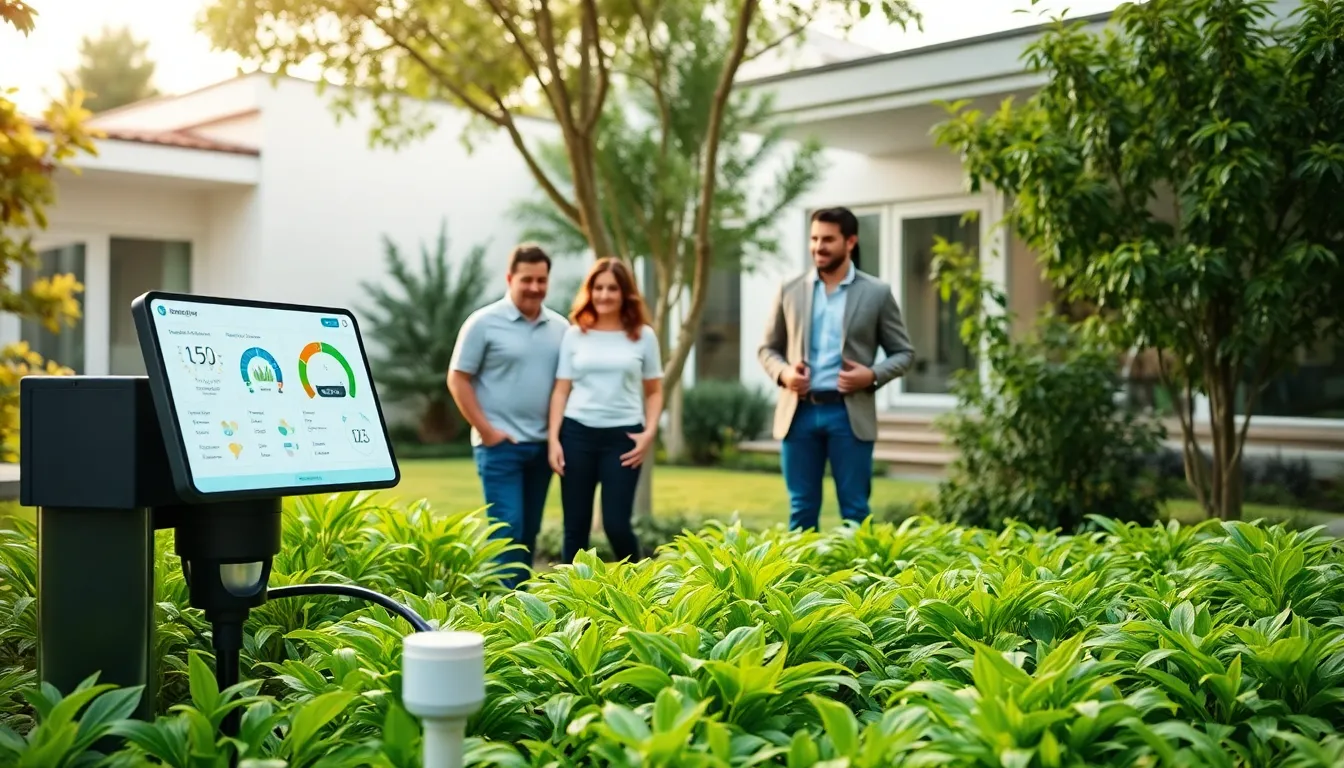Have you ever wondered how to make your garden thrive without drowning it in water? Enter smart irrigation systems, the modern gardener’s secret weapon. Imagine your plants drinking just the right amount of water while you kick back and wait for that glorious harvest. Sounds like magic, doesn’t it? Well, it’s real, and today we’re diving into the world of smart irrigation technology. Prepare to be amazed as we unravel the benefits, components, challenges, and future of this innovative gardening solution.
Table of Contents
ToggleUnderstanding Smart Irrigation Technology

Smart irrigation is all about conserving water while ensuring plants get the moisture they need. This technology uses advanced tools and techniques to monitor weather conditions, soil moisture, and plant requirements. By integrating these factors, it can optimize irrigation schedules and reduce water waste.
Picture sensors that whisper to your irrigation system when it’s too dry or when rain is on the way. Smart irrigation systems can make real-time adjustments to watering schedules, creating a win-win for both your garden and your water bill. This revolution in gardening isn’t just for tech-savvy homeowners. Anyone can immerse and reap the rewards of less water usage and healthier plants.
Benefits of Smart Irrigation Systems
The perks of smart irrigation systems extend beyond mere convenience. Here’s a breakdown of some key benefits:
- Water Conservation: These systems can reduce water usage by up to 50% compared to traditional methods. Now that’s a significant drop.
- Cost Savings: Lower water bills mean more cash in your wallet. Who doesn’t want that?
- Healthier Plants: Regulated water levels lead to stronger roots and more vibrant foliage. Happy plants equal a happy gardener.
- Time Efficiency: No more running to the garden with a hose. Set it and forget it, which frees up your time for other activities.
- Data-Driven Decisions: Advanced systems provide insights and analytics, helping you make informed decisions about your watering practices.
Key Components of Smart Irrigation
Understanding the components of smart irrigation systems brings clarity to this technology.
How Smart Irrigation Works
At its core, smart irrigation works by collecting data and adjusting watering schedules based on the specific needs of your plants. This could mean watering less frequently during rainy weeks or giving a little extra love during dry spells.
Sensor Technologies in Smart Irrigation
You can’t talk about smart irrigation without mentioning sensor technology. Soil moisture sensors, rain sensors, and weather stations play crucial roles. These little gadgets are designed to monitor specific conditions, like soil dampness and rainfall, and relay the info back to the system. Think of them as the little gardeners you never knew you needed.
Automation and Control Technologies
Next up, automation and control technologies streamline the entire process. With the help of apps and smart controllers, homeowners can manage their irrigation systems remotely. Did you forget to water the garden? No problem. Just pull out your smartphone and activate the system from afar. This level of control makes maintaining a thriving garden a breeze.
Implementing Smart Irrigation in Residential Properties
Implementing smart irrigation in residential properties isn’t an insurmountable task. In fact, it’s quite straightforward. Start by assessing your garden’s needs. Do you have flower beds, vegetable plots, or maybe a lawn? Each will require different irrigation methods.
Next, select the right system based on your garden type. There are plenty of options, from drip irrigation to sprinkler systems. After installation, calibration is key. Configure the sensors and controllers according to local weather patterns and soil moisture levels. This initial setup ensures that everything functions optimally from day one.
Finally, don’t forget to educate yourself on the system’s operation. Knowing how to use apps or adjust settings will maximize your garden’s productivity while minimizing water usage.
Challenges in Adopting Smart Irrigation Systems
Even though the advantages, integrating smart irrigation systems isn’t without its challenges. One major hurdle is the initial cost. While prices have been dropping, some homeowners are still deterred by the upfront investment.
Another consideration is technological literacy. For some, understanding the installation process and system operation can feel like learning a foreign language. A bit of practice and research can go a long way, though, and many companies offer support to make the transition smoother.
Finally, maintenance is essential. Regularly checking sensors and keeping the system in top shape is vital for performance. Neglect can lead to water wastage or insufficient watering, negating those hard-won benefits.
The Future of Smart Irrigation
The future of smart irrigation looks bright, especially as technology continues to advance. Innovations in AI and machine learning are set to revolutionize the industry even further. Imagine systems that can predict plant needs based on historical data and changing weather patterns.
Also, with increased global focus on sustainability and resource conservation, smart irrigation’s popularity will likely soar. More research and development will lead to improved functionalities, eventually making these systems more accessible and user-friendly.
As the world becomes more tech-savvy, smart irrigation systems will also incorporate IoT (Internet of Things) capabilities, enhancing their communication and efficiency.






